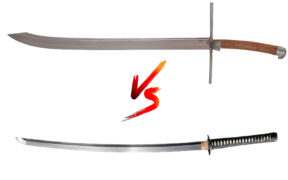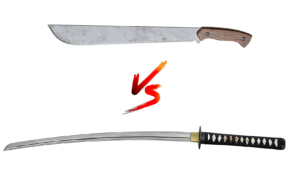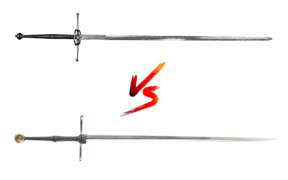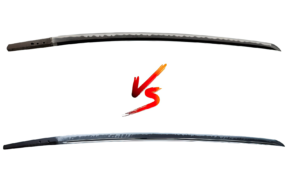Zweihander vs Katana: Long and Strong or Short and Swift?
NO AI USED This Article has been written and edited by our team with no help of the AI
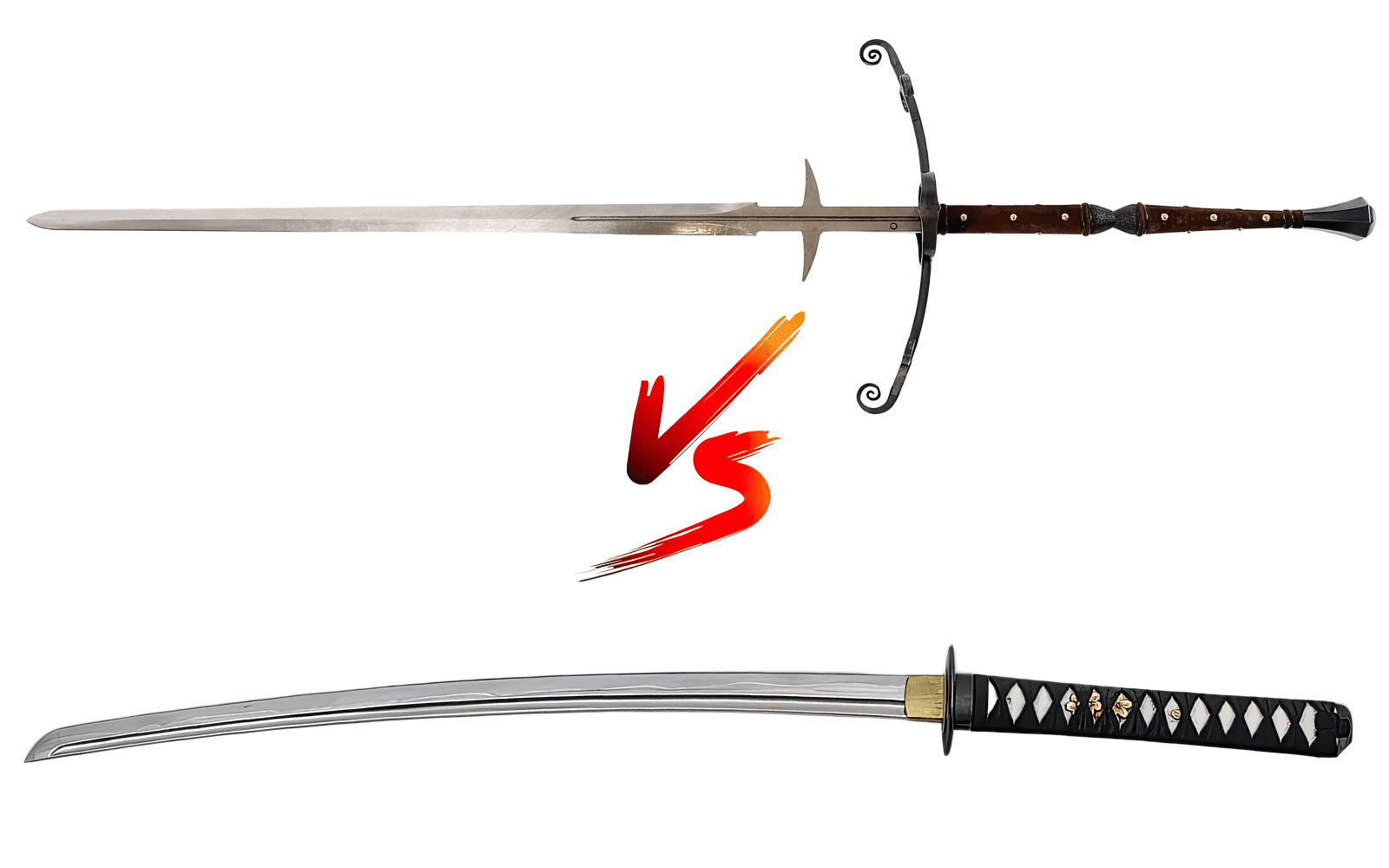
Both the Zweihander and katana are some of the most iconic swords today. Being the largest sword in history, the Zweihander is often compared to the more compact Japanese katana which has an emphasis on quick slashing attacks.
In this article, we delve into the size and design differences, fighting capabilities, uses in history, and attempt to determine a duel winner.
Size and Weight
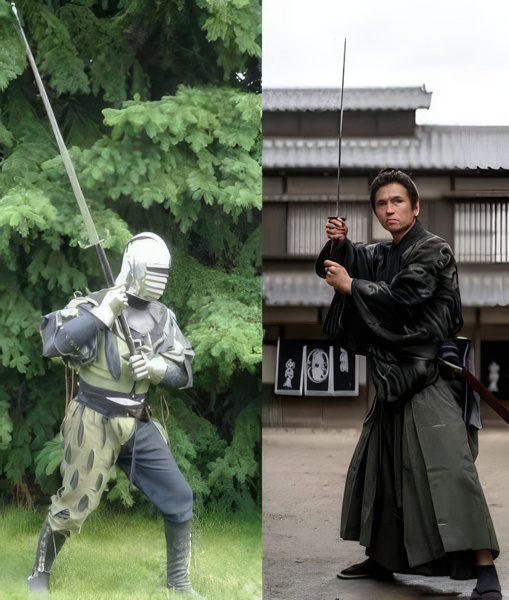
Although the zweihander is one the largest greatswords in history, it doesn’t weigh as much as it looks. As explained by Virtual Fechtschule, a HEMA school teaching one and two-handed European swords, a functional zweihander can weigh as much as 9 lbs (4 kg).
Meanwhile, the katana is an average-sized two-handed blade with a fairly compact design. It is lighter than the zweihander, but not necessarily lighter compared to other two-handed blades.
- Zweihander – 79 inches (200 cm)
- Katana – 39 inches (100 cm)
Design and Characteristics
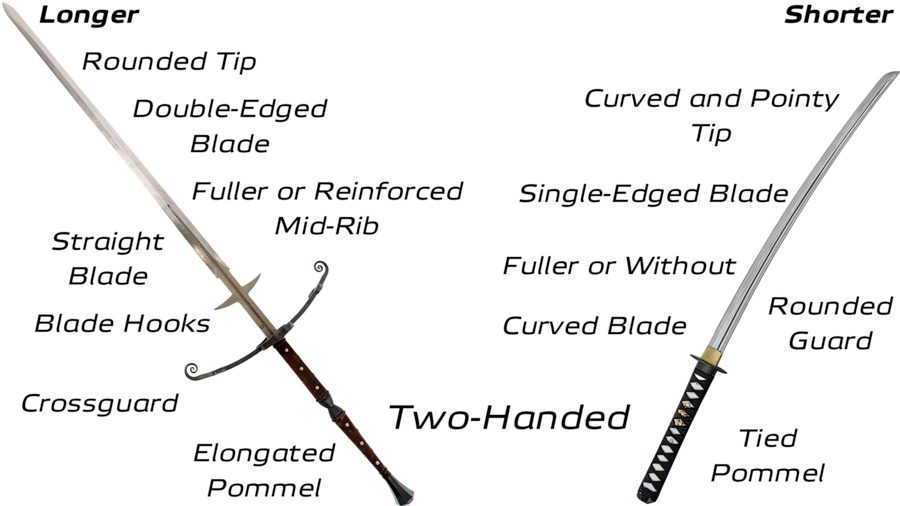
The zweihander is made from high-carbon steel and is highly flexible. Due to its massive size, it falls into the greatsword category alongside the montante, claymore, spadone, and Japanese nodachi.
In Japanese, the term “katana” translates simply to “sword.” It is one of the most popular sidearms used by the legendary samurai. It is traditionally made of tamahagane steel, a high-carbon material extracted from iron sand in the Japanese archipelago.
Zweihander Combat and Fighting Techniques
The zweihander relies on its momentum after a slash. Timing is crucial when using one as attacks are usually from the sides while thrusts can be from the top, even with a reverse grip.
Advantages
- Reach Advantage and Power – One of the largest swords worldwide. Due to its weight, it offers a high impact attack.
- Area of Control / Protection – It has a secondary handguard that can be used for defense.
- Anti–Formation – The ability to overextend an attack or attack from above allows for tight enemy pike or spear formations.
- Primary Weapon – It can be used as a primary weapon on the battlefield against longer spears with a reverse grip.
Disadvantages
- Close Quarters and Versatility – Its massive size makes it impossible to use in close quarters and limits attack variations.
- Stamina and Recovery Time – Due to the size and weight of the Zweihander, even an experienced swordsman requires much stamina to wield it. Therefore, the recovery time after each strike is greater compared to using a shorter blade.
Katana Combat and Fighting Techniques
Katanas are primarily slashing weapons with the ability to thrust as well. Due to their compact size, they are quick and versatile, allowing for offense and defense for both foot and cavalry troops.
Advantages
- Blade Edge Alignment – The katana’s singular, tapering edge allows it to easily hit its target, making it effective in slashing.
- Compact Versatile Weapon – Precise in slashing, ideal for close quarters, and easily carried as a self-defense sidearm or primary weapon.
- Slashing and Thrusting – The softer curvature makes it ideal for slashing and thrusting attacks.
- Speed and Unsheath Attacks – The style of carrying with the edge-up combined with its compact size allows its wielder to unsheathe the sword and attack in a single movement.
Disadvantages
- Reach Disadvantage – While its compact size is ideal for close quarters, it is at a disadvantage in terms of reach compared to other two-handed swords.
- Protection and Durability – A singular, rounded, small handguard and a slimmer blade are ineffective at stopping attacks or parrying from a massive greatsword.
Duel Winner (Katana vs Zweihander)
The German zweihander is a massive primary weapon ideal against multiple enemies or tight enemy formations. Its attacks can inflict a great amount of damage upon impact, even against armor, resulting in it being banned in some HEMA-sparring schools.
Comparatively, the Japanese katana is easily carried and can be unsheathed quickly to attack an opponent in a single strike. It also offers a high amount of precision due to its compact size and is suitable for foot and mounted troops.
In an unarmored duel between the zweihander and the katana, the larger sword is more likely to prevail due to its range advantage. However, if the fight occurred in close quarters, the katana would no doubt be the victor.
History of Warfare and Battles
The zweihander and katana coexisted during the same period, though due to regional differences, they never met on the battlefield. One became a situational and powerful primary weapon, while the other made an impact on an entire culture.
- Zweihander – Renaissance Era (15/16th century CE)
- Katana – Muromachi Period (14th/15th century CE)
Zweihander
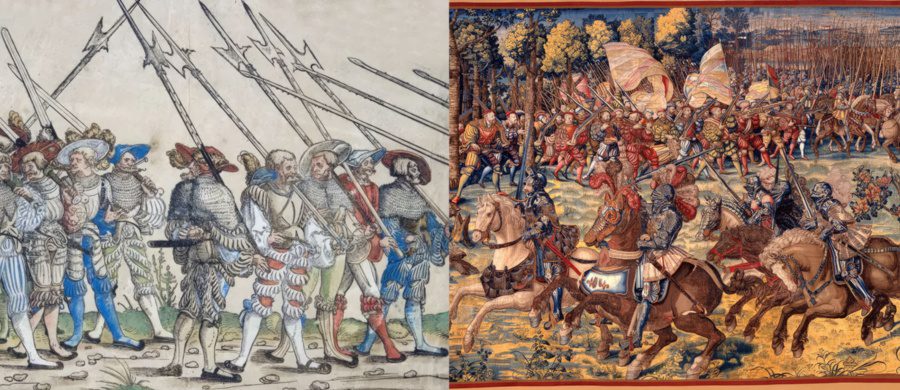
The zweihander was developed in Europe during the Renaissance, emerging in southern Germany and Switzerland. It was a larger version of the traditional arming sword and longsword.
Zweihanders were used by the renowned mercenaries known as Landsknecht in many European battles, defeating the pike formation that dominated warfare at the time.
R. G. Grant, a leading researcher of Europe’s finest warriors, says this about the zweihander wielders: “Fighting as dense formations of pikemen supported by firearms, they were at their best exceptionally tough foot soldiers in combat.”
Katana
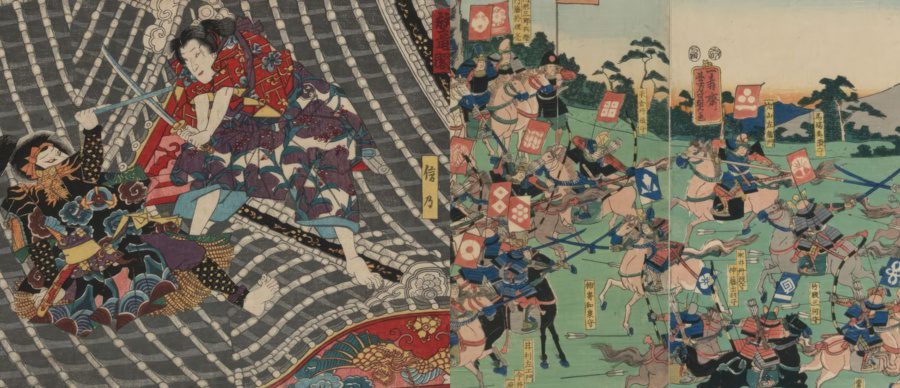
The katana was a weapon used by the legendary samurai of Japan. It emerged during the Muromachi Period (14th-16th century) as a larger version of the earlier uchigatana.
This weapon was a sidearm on the battlefield, used only if the primary weapon was rendered ineffective. It was popular during the warring Sengoku Jidai (1467-1615 CE) and was used in almost every battle.
With the start of the peaceful Edo Period (17th-19th century CE), it became the main self-defense weapon and gradually became a cultural symbol.
